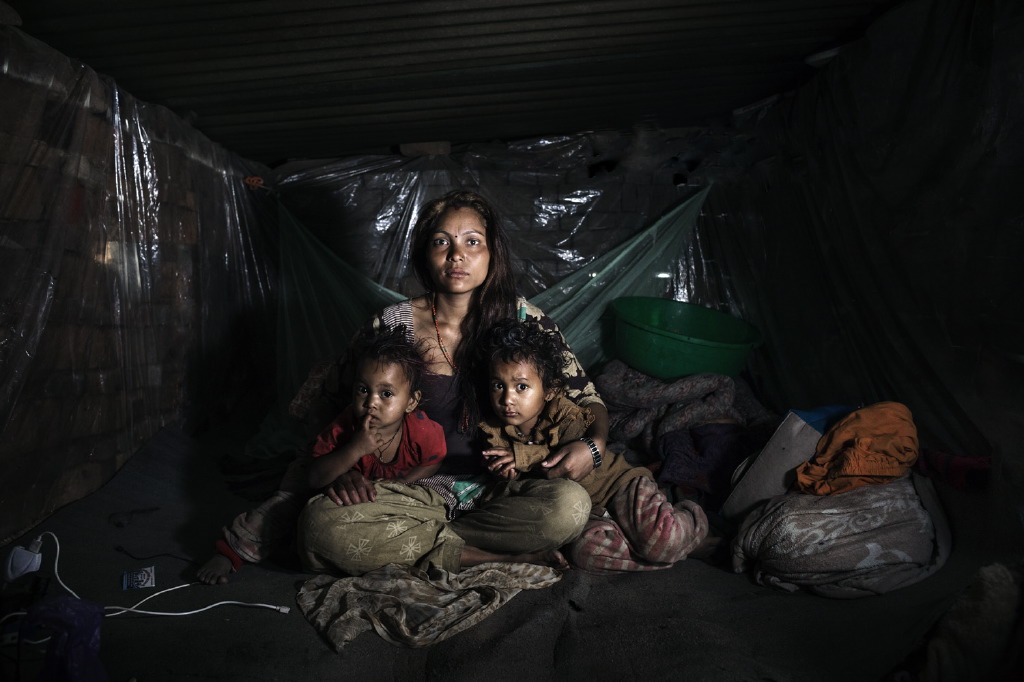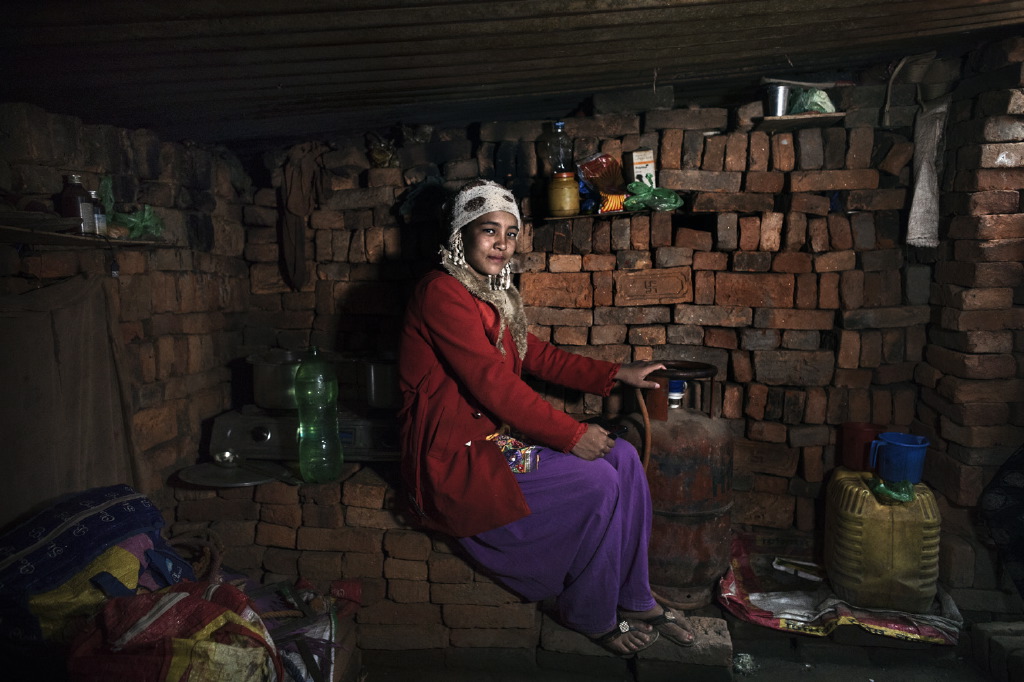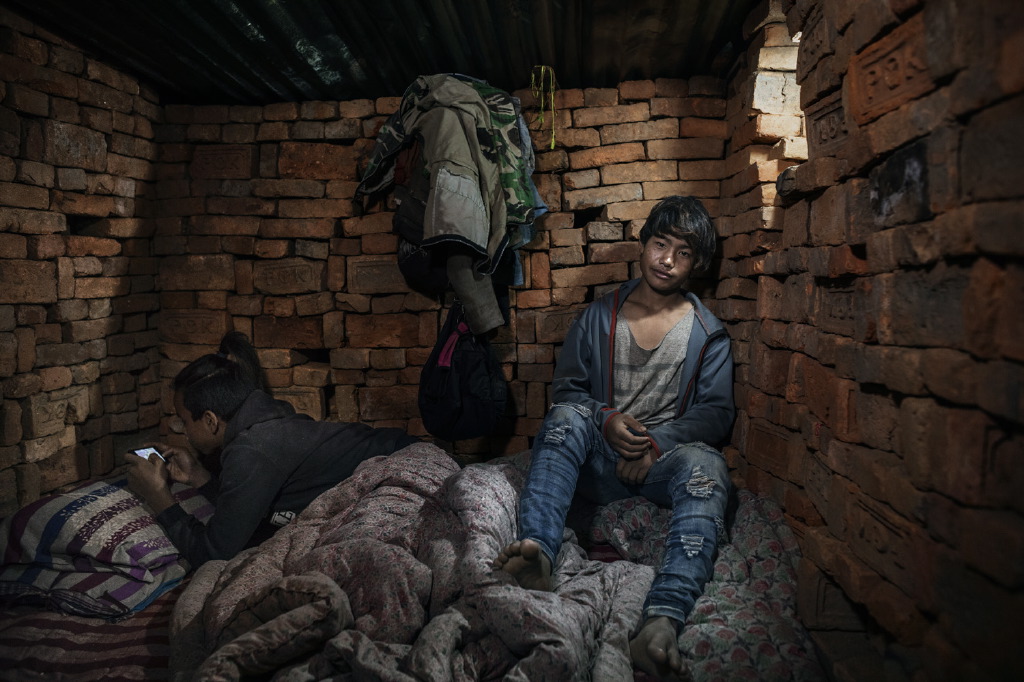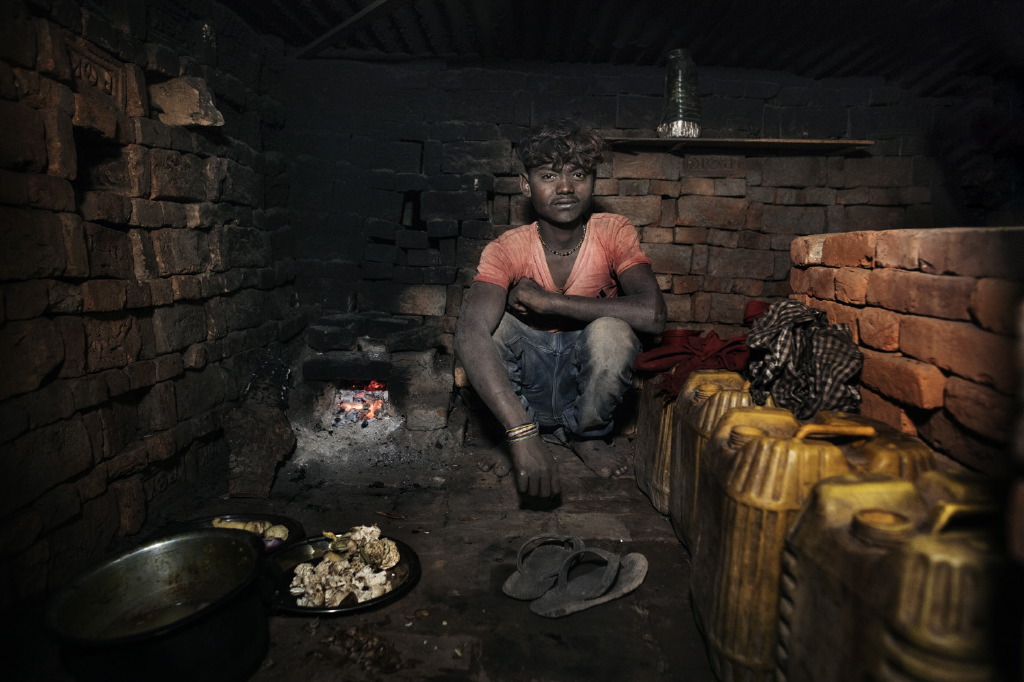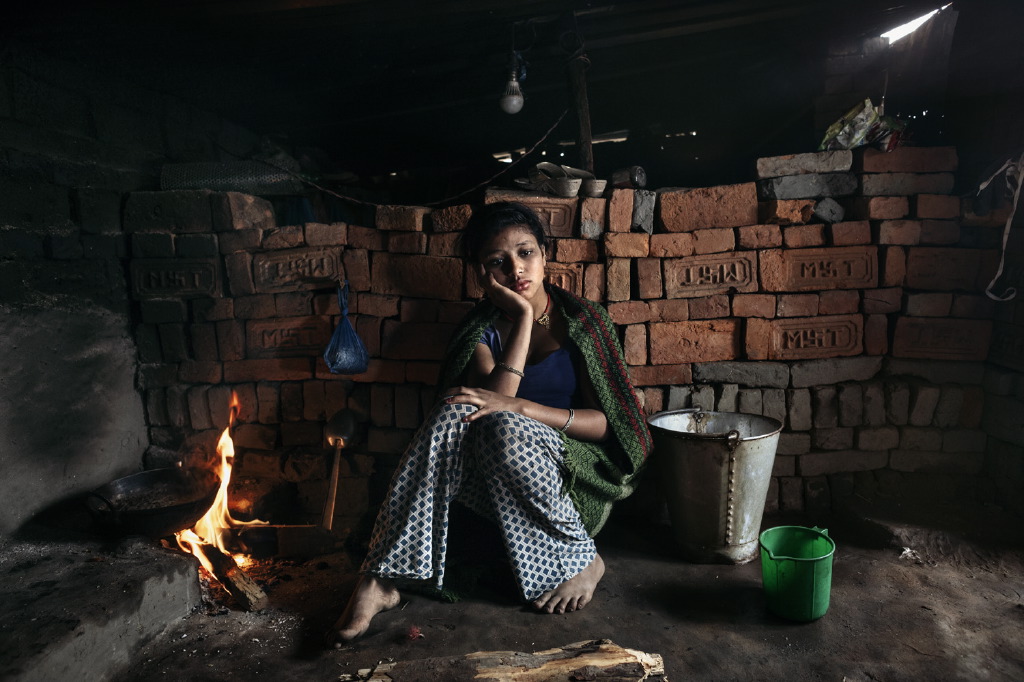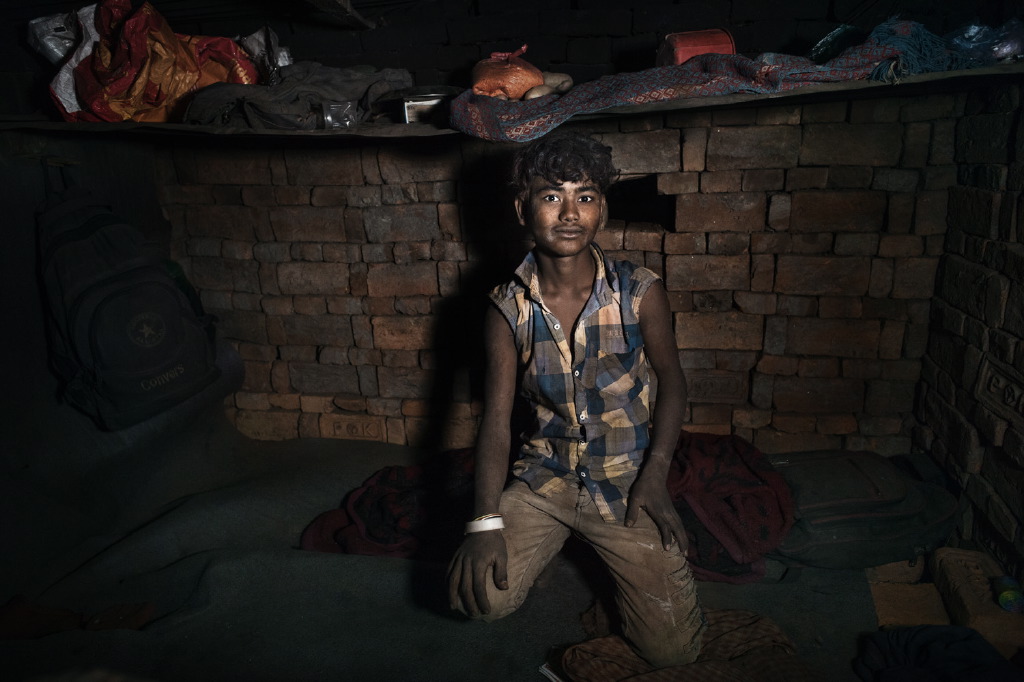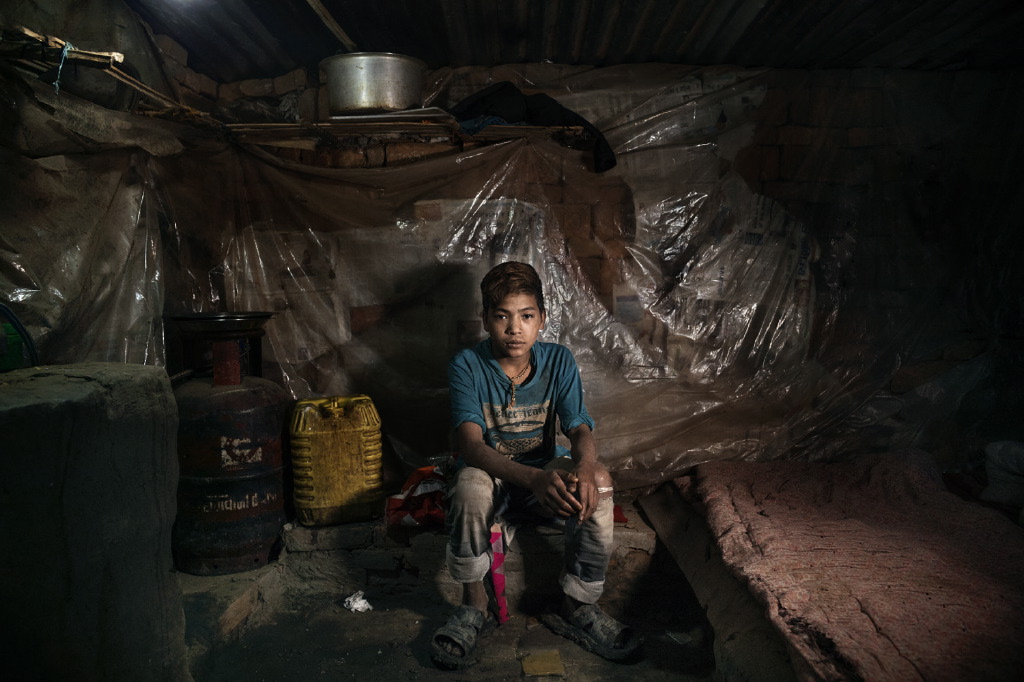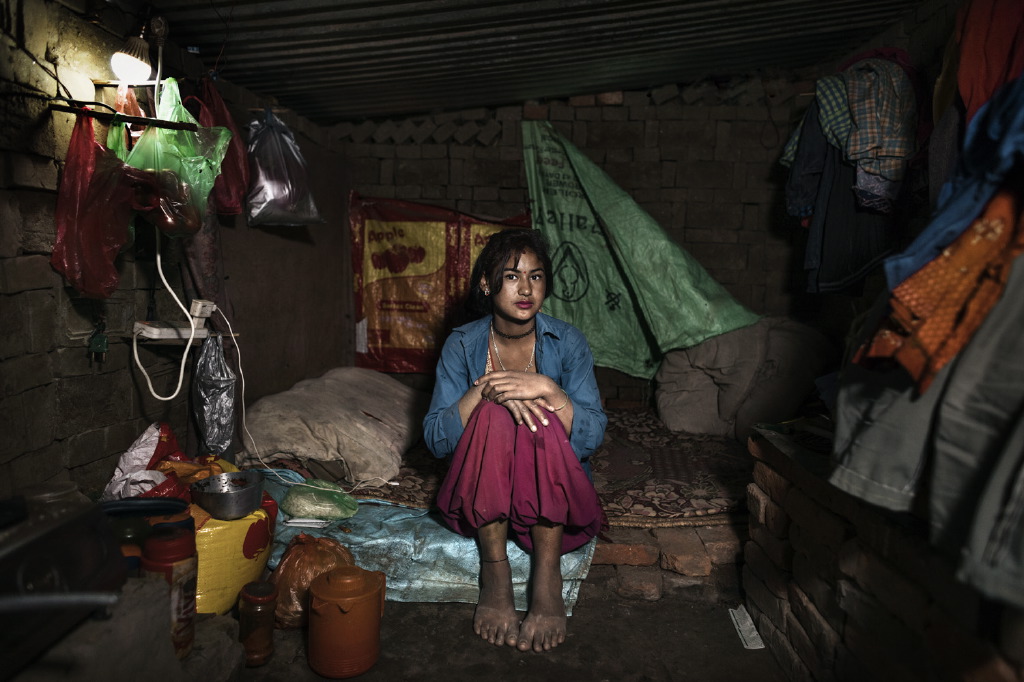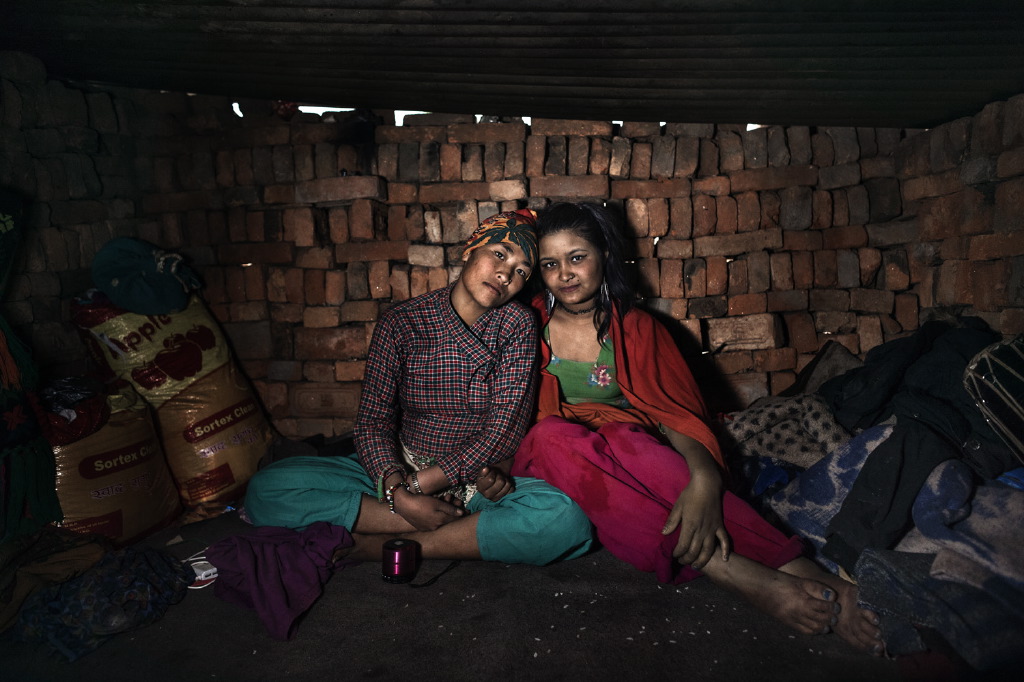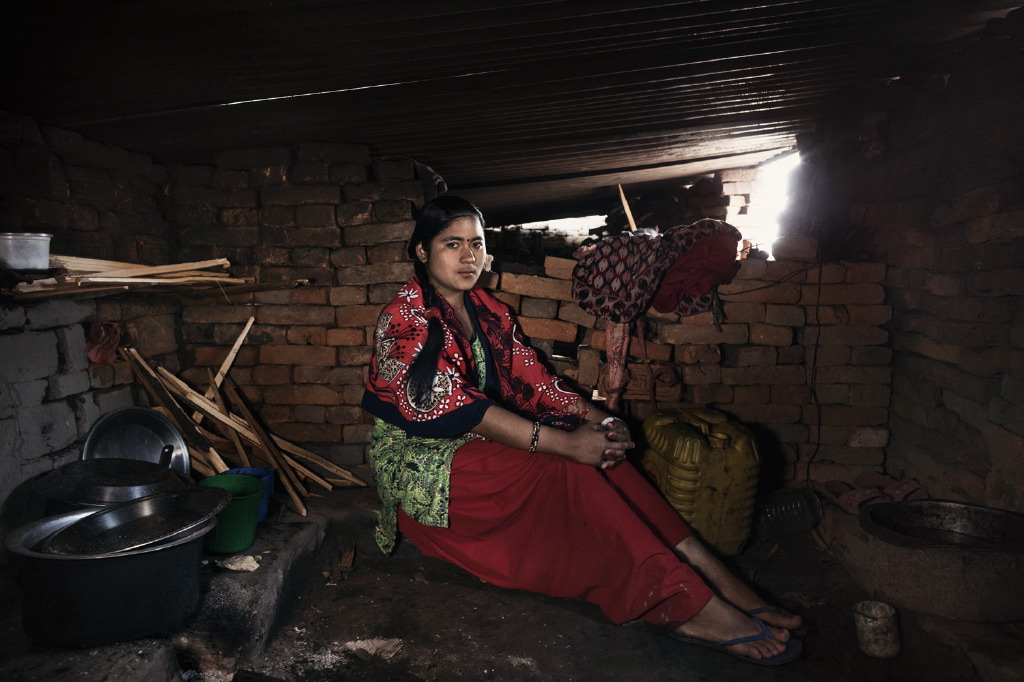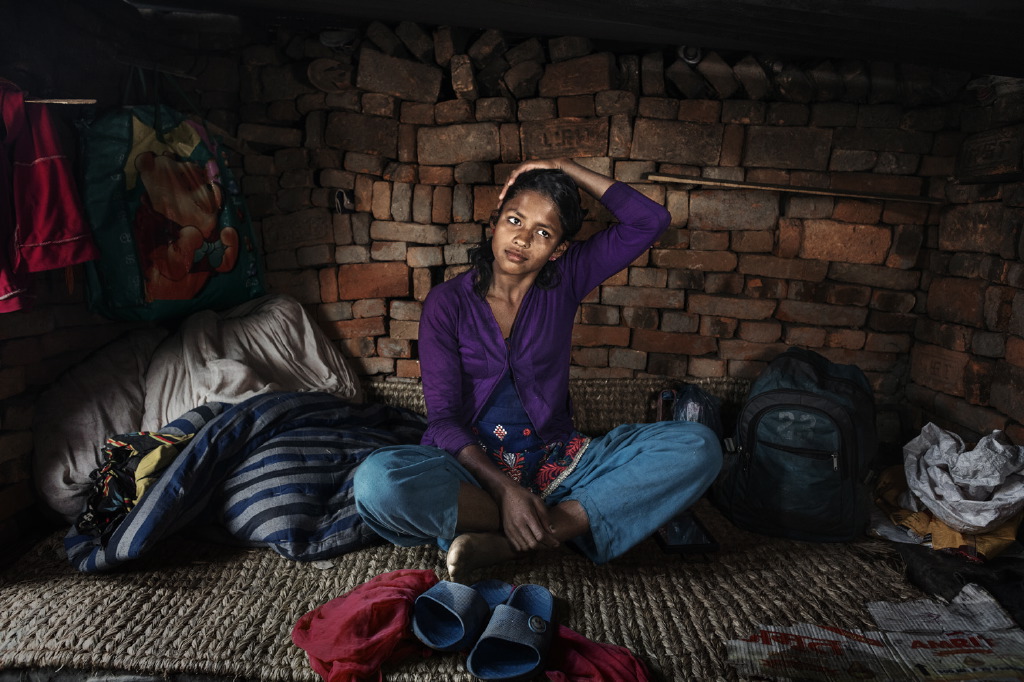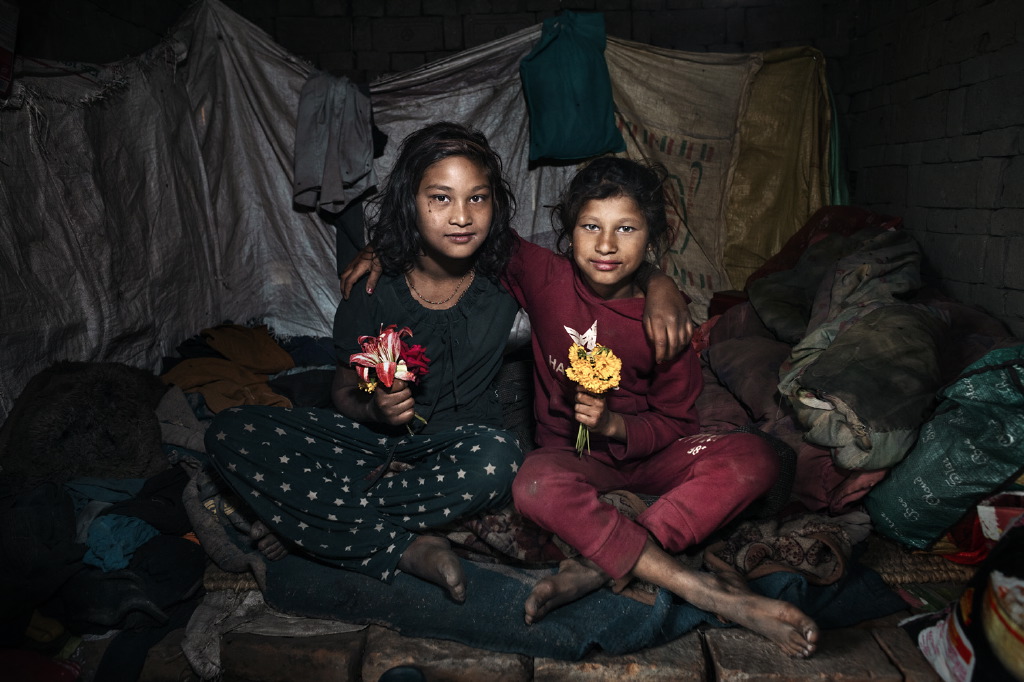X
In the Katmandu valley, brick factories, arise in rural and isolated areas, away from road networks and therefore also from services, shops, schools or hospitals. From the outside, the bricklayers seem like huge refugee camps, with small and temporary huts (called Jhyaulis), made of bricks covered with sheet metal plates. The perforated walls of these huts are not enough to protect workers from the cold wind of the Katmandu valley, typical of the winter months. This is in fact a work that takes place for about 6 months a year, usually in the dry season that goes from November to May, when the earth is dry and therefore suitable for producing bricks. Life in these conditions is transformed into a continuous struggle for survival. The health risks are enormous: the strong concentration of dust in the area and the toxic fumes released by brick kilns are often a lethal combination. In fact, the areas around the brick buildings are usually highly polluted. It is estimated that, every year, 850,600 tons of dioxin are released from brick kilns in the Katmandu Valley alone, while the consequent pollution of the surrounding areas is sufficient to cause the premature death of 1,600 people a year, only in Katmandu. (Text by Muriel de Meo).

